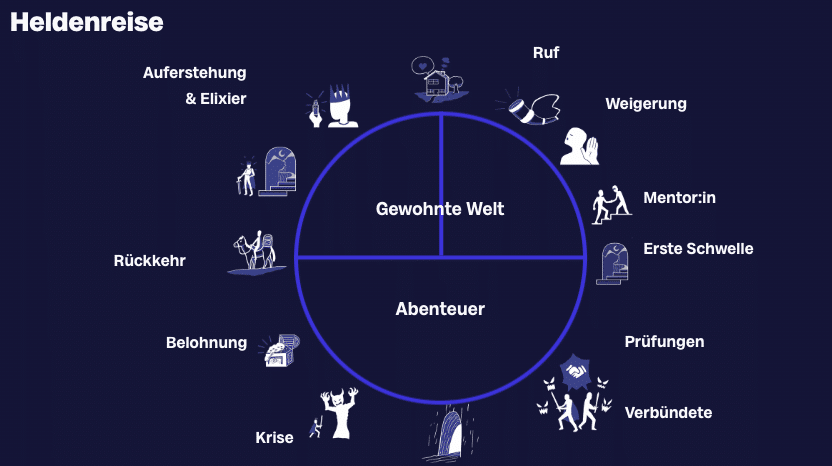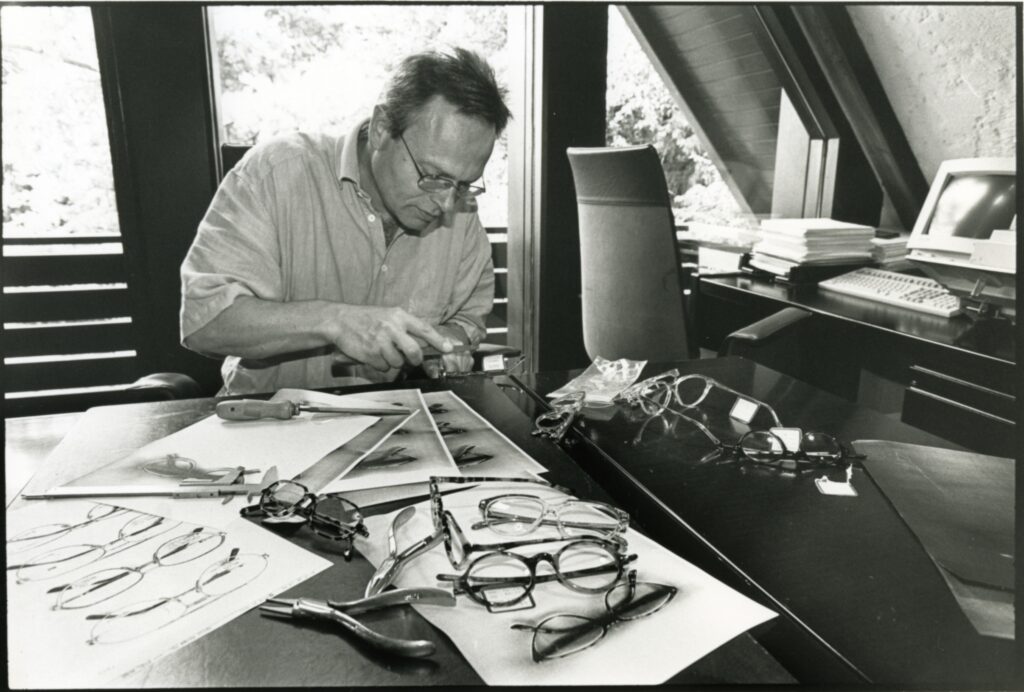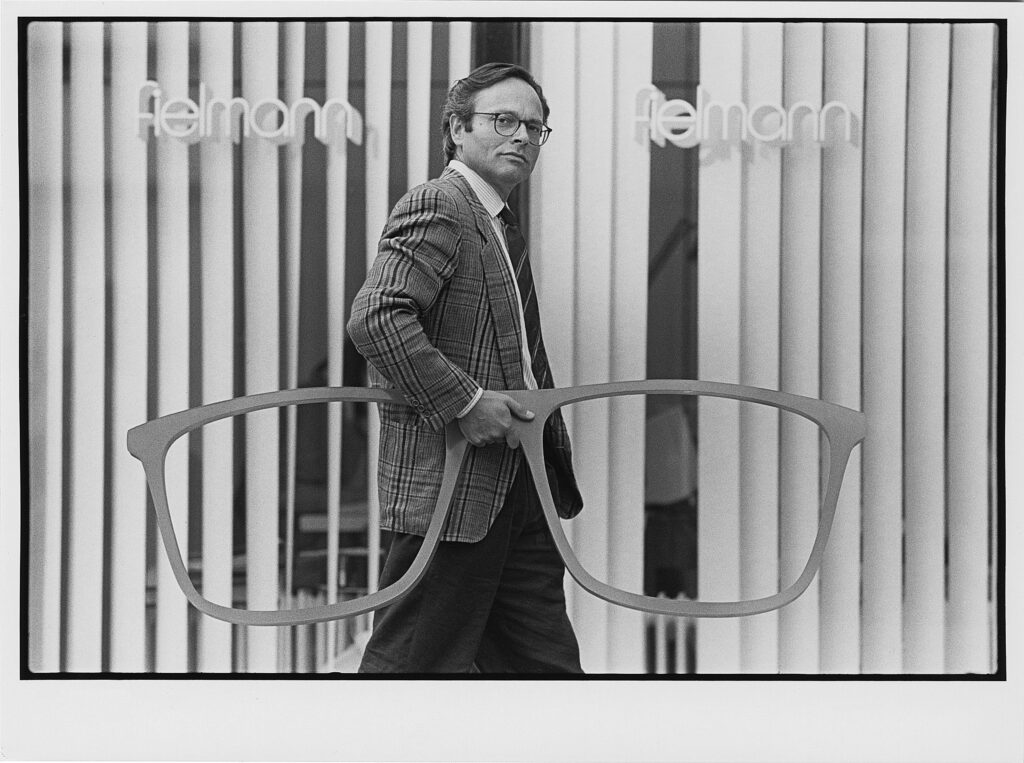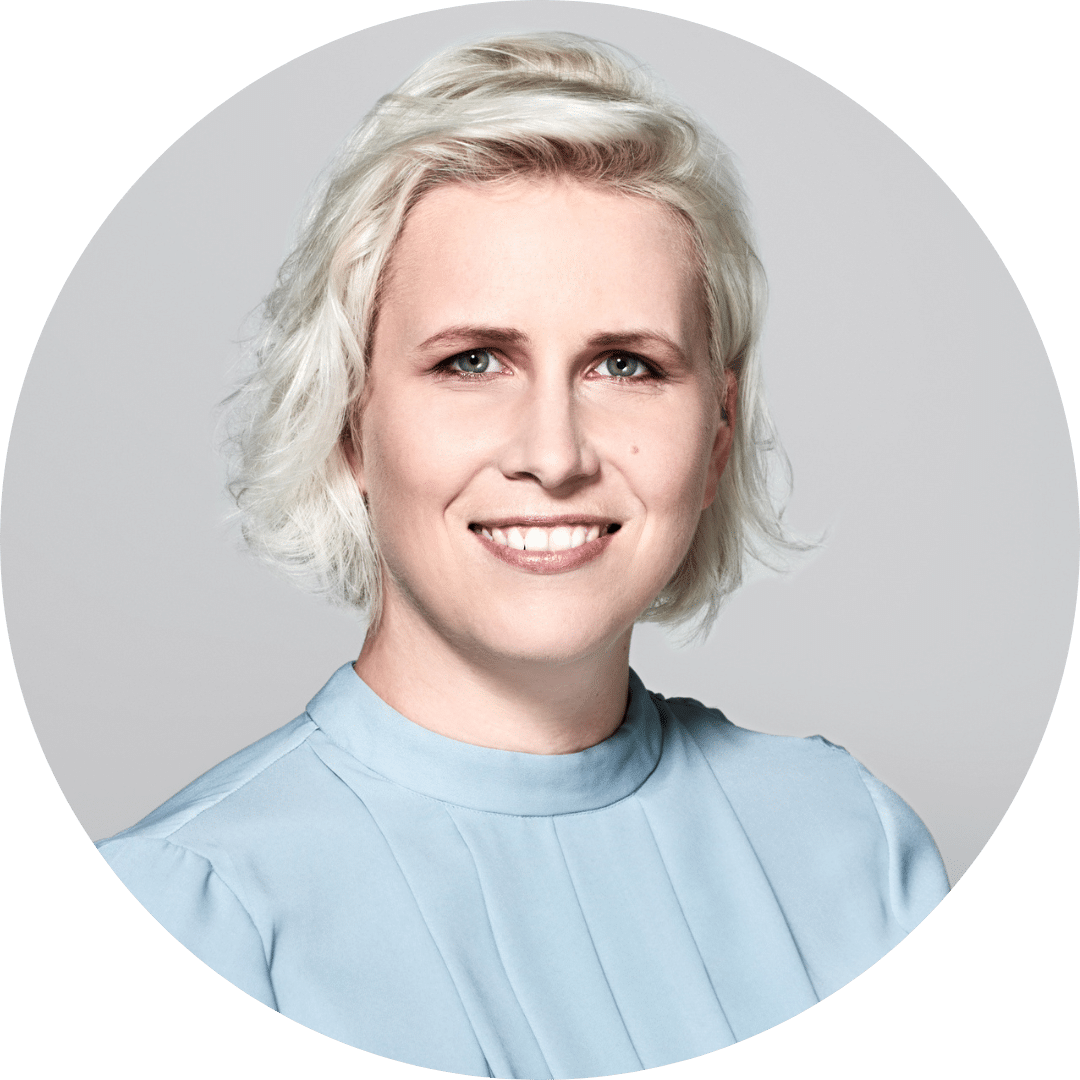Fielmann’s Hero’s Journey: From Local Optician to European Eyewear Giant
The success story of Fielmann is closely linked to the vision of its founder, Günther Fielmann. What began as a personal conviction developed into a movement. He revolutionized the optical industry in Germany by making eyeglasses accessible to everyone as a fashionable and affordable product. His principle was as simple as it was effective: “Advise every customer as you would like to be advised yourself.” A single store thus became a brand that fundamentally changed the understanding of optical care.

The Familiar World: The dusty Eyewear Market
In the early 1970s, the eyewear industry seemed outdated, almost sterile. Opticians wore white coats, and their shops resembled pharmacies. Hardly anyone wanted to linger here to find the right frames. There wasn’t much choice anyway, because the eyewear market in Germany was strictly regulated. Health insurance companies only paid for a limited range, consisting of just six models for adults and two for children. Eyeglasses were considered a medical aid that people wore because they had to, not because they wanted to. Those who had personal preferences had to dig deep into their pockets, but very few could afford to do so.
The Call to Adventure: The Discovery of an Injustice

Even during his training as an optician, Günther Fielmann showed that he thought differently from many of his colleagues. For his journeyman’s piece, he designed and manufactured his own eyeglass frame — precisely crafted and bold in design. The Chamber of Crafts honored his work. His ambition was piqued, and in 1965 he successfully passed his master craftsman’s examination.
In the years that followed, he worked as a master optician in several businesses. There, he experienced firsthand how little scope there was for individual customer needs. He wore glasses himself and knew these limitations from his own experience.
At the same time, he moved into industry for a while. At the US company Bausch & Lomb, the manufacturer that later distributed Ray-Ban, he learned about the production of eyeglass lenses and frames in detail. In the process, he came to a crucial realization: the prices that opticians charged for eyeglasses were out of proportion to the actual production costs.
The first Hurdle: Taking the step toward Self-Employment
Armed with this conviction, Günther Fielmann opened his first store in Cuxhaven in 1972, then under the name Optic im Centrum. Instead of orienting himself towards the inflated margins of his competitors, he linked his sales prices to manufacturing costs. This enabled him to offer his models at significantly lower prices, giving people with smaller budgets access to a wider selection of eyewear.
In addition, Fielmann displayed the glasses openly in the shop window instead of keeping them behind closed cabinet doors as was customary. In doing so, he broke with old industry traditions and created a shopping experience that was geared towards people’s needs for the first time.
Trials and Allies: “Avenger of the Bespectacled”
The competition was not amused by Günther Fielmann’s business ideas. They considered his pricing dangerous and his open presentation of the models presumptuous. He soon became known colloquially as the “avenger of the bespectacled” – a mixture of ridicule and recognition. Some opticians even wanted to sue him.
But Fielmann did not let this deter him. On the contrary, resistance from the industry only strengthened his resolve to press ahead. He himself later said:
“If they had left me alone back then, I would have kept my six or seven businesses, and that would have been that.”
Instead, his business grew. By 1980, he had already opened 49 stores. While many in the industry criticized his methods, more and more people found what they had been missing in his stores: choice, style, fair prices, and the feeling of being taken seriously.
Public support also grew. The media began to report on the “customer-friendly optician from the north.” The first health insurance companies showed interest in cooperation. Fielmann was no longer an outsider, but well on its way to changing the rules of the game.
Reward: System Collapse in the Province
1981 can be seen as a turning point in Fielmann’s journey.
In the small East Frisian town of Esens, Günther Fielmann concluded a special agreement with the AOK health insurance company. Instead of the usual six insurance models, he was now able to offer insured persons 90 different frames without additional payment.
With this step, he called the entire health insurance system for optometry into question. Suddenly, people who previously had little freedom of choice were offered a real choice and did not have to pay a cent extra for it. The reaction of the competition was not long in coming: outrage, protest, renewed accusations that Fielmann was undermining the value of optometry.
But demand was overwhelming and customer response was clear. It was now obvious that Fielmann was no longer just writing its own history, but that of the entire industry.

Resurrection and Elixir: Democratized Vision for Millions
By the time Fielmann AG was listed on the stock exchange in 1994, the former provocateur had transformed himself into a recognized industry leader. For decades, Günther Fielmann led his company with personal style and a clear vision. In 2012, his son Marc Fielmann joined the group, becoming a member of the Executive Board in 2016. From 2018, father and son formed a dual leadership team until Marc finally took over as sole CEO in 2019.
Today, Fielmann stands for the democratization of vision. What used to be a stigma has long since become fashion and lifestyle. The Fielmann Group announced in a press release that its consolidated sales increased by 12 percent to around 1.18 billion euros in the first half of 2025. The company operates over 1,200 branches in Europe, employs more than 24,000 people, and is not only the market leader in Germany but also has a presence in several European countries. Günther Fielmann’s legacy lives on: good vision for everyone – at fair prices.
Long Story Short: The Hero’s Journey of Fielmann
- The Familiar World / Call to Adventure: The dusty eyewear market, Fielmann’s journeyman’s piece, master’s examination, insights into price structures.
- The first Milestone: Optic im Centrum opened in 1972, offering fair prices and open presentation.
- Challenges and Allies: Resistance from competitors, ridicule as the “avenger of the bespectacled,” growing customer numbers and branch network.
- Reward: Special contract with AOK in 1981, 90 health insurance models without co-payments, outrage in the industry, great popularity among customers.
- Resurrection & Elixir: IPO in 1994, handover to Marc Fielmann, now market leader and democratization of vision in Europe.
Another exciting hero’s journey with ups and downs can be found here.
Share this article
Related articles

20 November 2025








